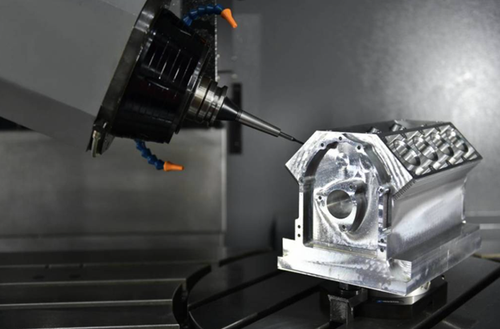
While looking for a diamond, understanding the key factors that decide its quality is fundamental. Perhaps of the most valuable device in this cycle is the Diamond 4Cs Chart. The 4Cs — Cut, Variety, Lucidity, and Carat weight — are the principal standards utilized by gem specialists to assess a diamond. Every one of these variables assumes a huge part in the general magnificence and worth of the stone. This article will separate the Diamond 4Cs Chart and make sense of how every component adds to the final decision while buying a diamond.
The Diamond 4Cs Chart: An Outline
The Diamond 4Cs Chart is a reviewing framework created by the Gemological Foundation of America (GIA) that gives a normalized method for evaluating the nature of diamonds. The 4Cs allude to Cut, Variety, Lucidity, and Carat weight, every one of which is estimated on a scale that assists the two goldsmiths and buyers with contrasting diamonds. Understanding the 4Cs is fundamental for making an educated buy, as they straightforwardly influence a diamond’s appearance, strength, and cost. The Diamond 4Cs Chart is a fundamental device for anyone with any interest in buying a diamond, whether for an engagement ring, a gift, or one more piece of fine gems.
Cut: The Main Calculate the Diamond 4Cs Chart
The Cut is maybe the most pivotal component on the Diamond 4Cs Chart with regards to the diamond’s appearance. It alludes to how well the diamond has been molded and faceted, and it straightforwardly influences how well the diamond mirrors light. A very much cut diamond will shimmer splendidly, while an ineffectively cut diamond might seem dull and dreary, no matter what its different properties.
On the Diamond 4Cs Chart, Cut is reviewed on a scale that reaches from Magnificent to Poor. The better the cut, the more the diamond will mirror light, upgrading its splendor. For example, a Great cut diamond will have ideal extents, balance, and clean, which permits it to get and mirror light in the most ideal manner. Cut not entirely set in stone by a few variables, including the diamond’s extents, evenness, and clean, and it can fundamentally affect the diamond’s general magnificence.
Variety: Assessing the Diamond’s Shade on the 4Cs Chart
Variety is one more significant consider the Diamond 4Cs Chart. A diamond’s variety alludes to the presence of any yellow or earthy colored tints inside the stone. The less variety a diamond has, the higher its quality. The GIA Diamond 4Cs Chart grades diamonds from D (dry) to Z (light yellow or brown). A D-grade diamond is viewed as the greatest and is totally vapid, while a Z-grade diamond will have perceptible yellow or earthy colored hints.
In spite of the fact that diamonds can come in different varieties, the best diamonds fall inside the D-F range, which are vapid or close lackluster. These diamonds permit all the more light to go through, which improves their brightness. While dry diamonds are by and large more costly, many individuals find that diamonds in the G-J range give a decent equilibrium between quality and worth. Understanding the variety evaluating on the Diamond 4Cs Chart assists purchasers with tracking down the right harmony among appearance and cost.
Lucidity: The Significance of Flaws on the Diamond 4Cs Chart
Clearness is one more basic element on the Diamond 4Cs Chart. It alludes to the presence of inside or outside flaws, otherwise called considerations and imperfections, individually. The less blemishes a diamond has, the higher its clearness grade. Diamonds are evaluated on a scale from Perfect (FL) to Included (I1, I2, and I3), with Faultless diamonds being liberated from any noticeable considerations or imperfections under 10x amplification.
On the Diamond 4Cs Chart, diamonds with the most elevated clearness grades, for example, Faultless (FL) or Inside Immaculate (IF), are viewed as intriguing and more significant. Notwithstanding, numerous diamonds with lower clearness grades, like VS1 (Tiny Incorporations) or SI1 (Slight Considerations), actually have extraordinary visual allure and are in many cases a more reasonable choice. While clearness is a significant component, numerous purchasers observe that slight considerations are not perceptible to the unaided eye, permitting them to focus on different parts of the 4Cs, like cut or variety, contingent upon their inclinations.
Carat Weight: Size Matters on the Diamond 4Cs Chart
Carat weight is the proportion of a diamond’s size, and it’s perhaps of the most commonly known consider the Diamond 4Cs Chart. Carat weight is frequently connected with the diamond’s worth, as bigger diamonds will generally be more costly. Nonetheless, it’s essential to take note of that carat weight alone doesn’t decide a diamond’s general quality or magnificence. Two diamonds of a similar carat weight can contrast significantly with regards to their cut, variety, and clearness.
On the Diamond 4Cs Chart, carat weight is normally estimated in parts of a carat, with 1 carat rising to 0.2 grams. While bigger lab made diamonds are more extraordinary and can order greater costs, a more modest diamond with a magnificent cut and higher lucidity can be more outwardly engaging than a bigger diamond with a lower cut quality. While picking a diamond in view of carat weight, it’s fundamental to consider how all the 4Cs connect to accomplish the best generally speaking appearance and worth.
The most effective method to Involve the Diamond 4Cs Chart for Purchasing a Diamond
While utilizing the Diamond 4Cs Chart to purchase a diamond, it’s vital to comprehend how the 4Cs collaborate with one another. A diamond with a superb cut, close dismal variety, and high lucidity will be all the more outwardly engaging, regardless of whether it’s more modest or has a lower carat weight. Then again, a huge diamond with unfortunate cut quality might not have a similar splendor, regardless of its size.
To utilize the Diamond 4Cs Chart really, focus on the elements that make the biggest difference to you. For instance, on the off chance that you need a diamond with unbelievable shimmer, center around cut quality. In the event that you favor a bigger stone, you might pick a diamond with a marginally lower clearness grade, as long as the considerations are not noticeable to the unaided eye. Understanding how the 4Cs cooperate will permit you to track down a diamond that meets your tasteful and spending plan prerequisites.
The Significance of Confirmation in the Diamond 4Cs Chart
One of the most critical parts of buying a diamond is guaranteeing that it accompanies legitimate confirmation. An endorsement from a trustworthy gemological organization, for example, the GIA, confirms the diamond’s 4Cs grades and ensures its genuineness. At the point when you survey a diamond’s confirmation, you can be sure about the precision of the data on the Diamond 4Cs Chart. This confirmation likewise increases the value of the diamond and can act as a kind of perspective point for future resale or protection purposes.
Final Thoughts on the Diamond 4Cs Chart
The Diamond 4Cs Chart is a fundamental instrument for understanding what makes a diamond significant and wonderful. By taking into account the Cut, Variety, Clearness, and Carat weight, you can settle on a more educated choice while buying a diamond. Recall that the best diamond for you is one that adjusts these elements in a manner that lines up with your own inclinations and spending plan. Whether you are purchasing an engagement ring or an extraordinary piece of gems, understanding the Diamond 4Cs Chart will assist you with finding a diamond that isn’t just dazzling yet in addition an incredible venture.



